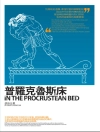A historian’s personal journey into the complex questions of immigration, home and nation
From Ireland to London in the 1950s, Derry in the Troubles to contemporary, de-industrialised Manchester, Joyce finds the ties of place, family and the past are difficult to break. Why do certain places continue to haunt us? What does it mean to be British after the suffering of Empire and of war? How do we make our home in a hypermobile world without remembering our pasts?
Patrick Joyce’s parents moved from Ireland in the 1930s and made their home in west London. But they never really left the homeland. And so as he grew up among the streets of Paddington and Notting Hill and when he visited his family in Ireland he felt a tension between the notions of home, nation and belonging. Going to My Father’s House charts the historian’s attempt to make sense of these ties and to see how they manifest in a globalised world. He explores the places – the house, the street, the walls and the graves – that formed his own identity. He ask what place the ideas of history, heritage and nostalgia have in creating a sense of our selves. He concludes with a plea for a history that holds the past to account but also allows for dynamic, inclusive change.
Om författaren
Patrick Joyce has become known, through books including Visions of the People, Democratic Subjects and The Oxford Reader on Class, as a leading social and cultural historian, as well as one of the chief exponents of postmodernist thought in history. He is Professor of Modern History at Manchester University.












